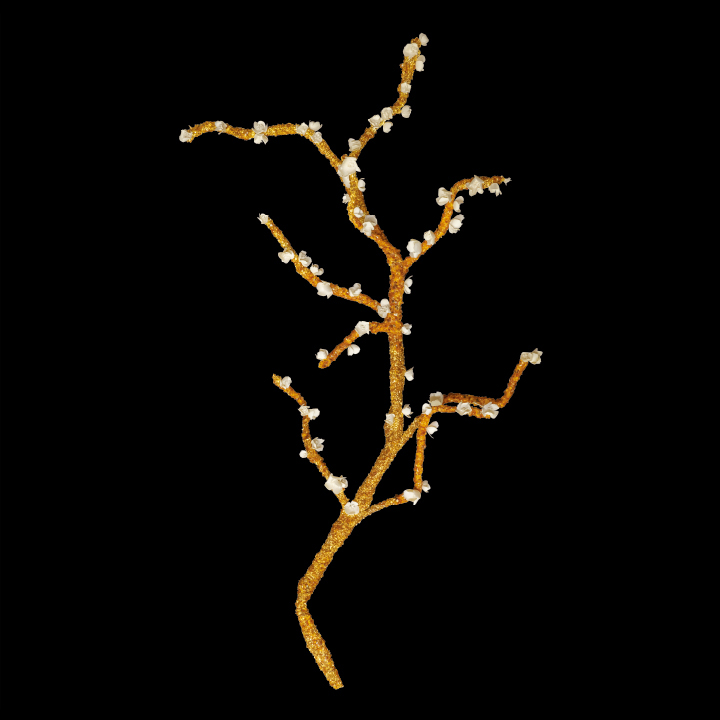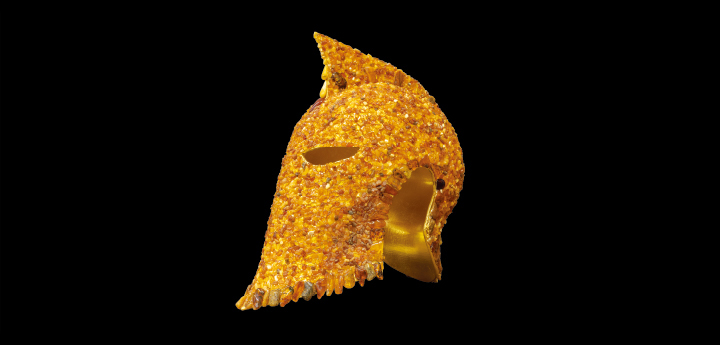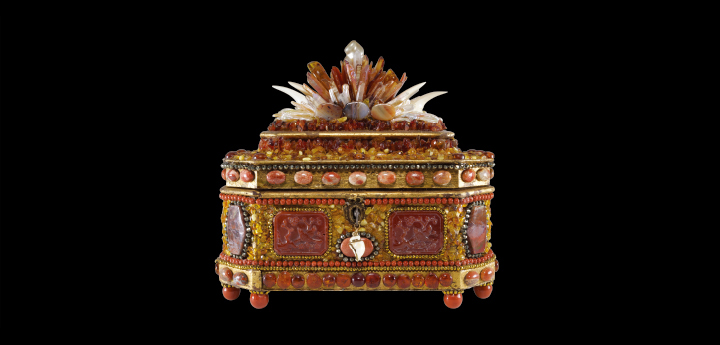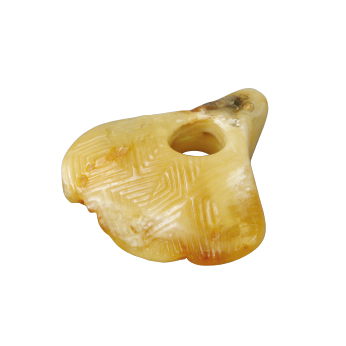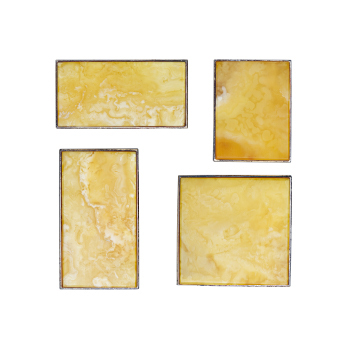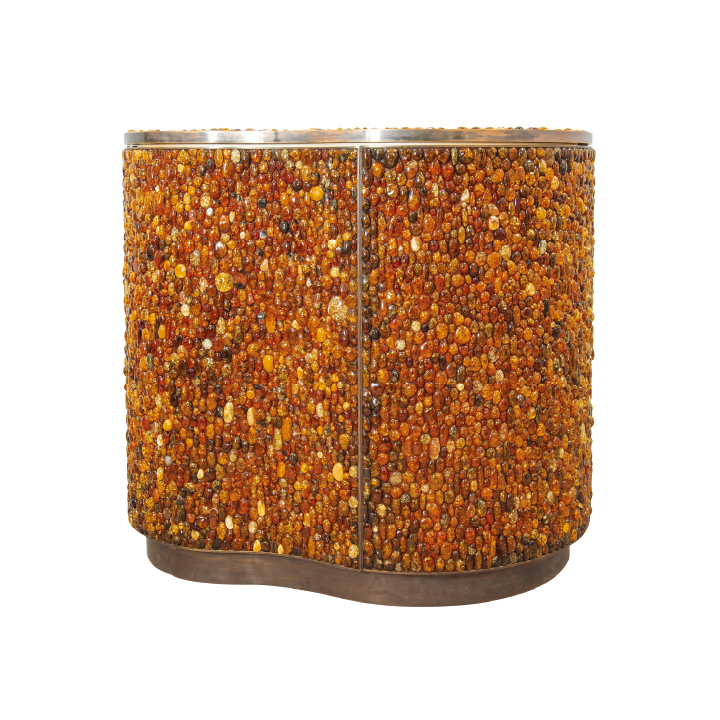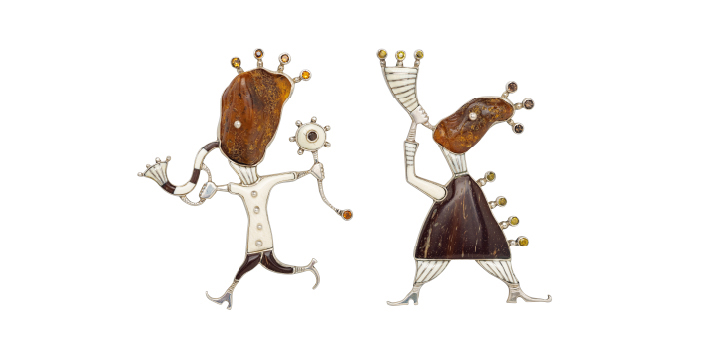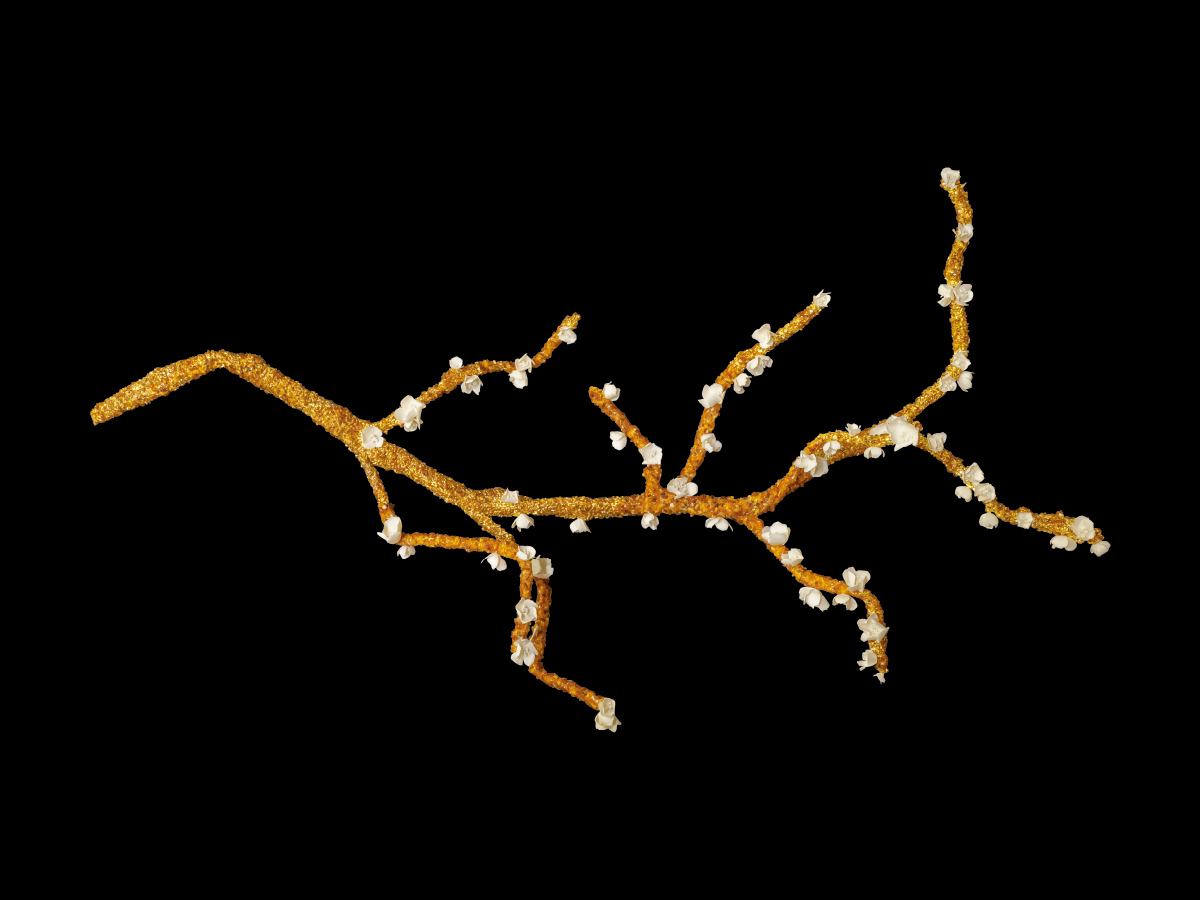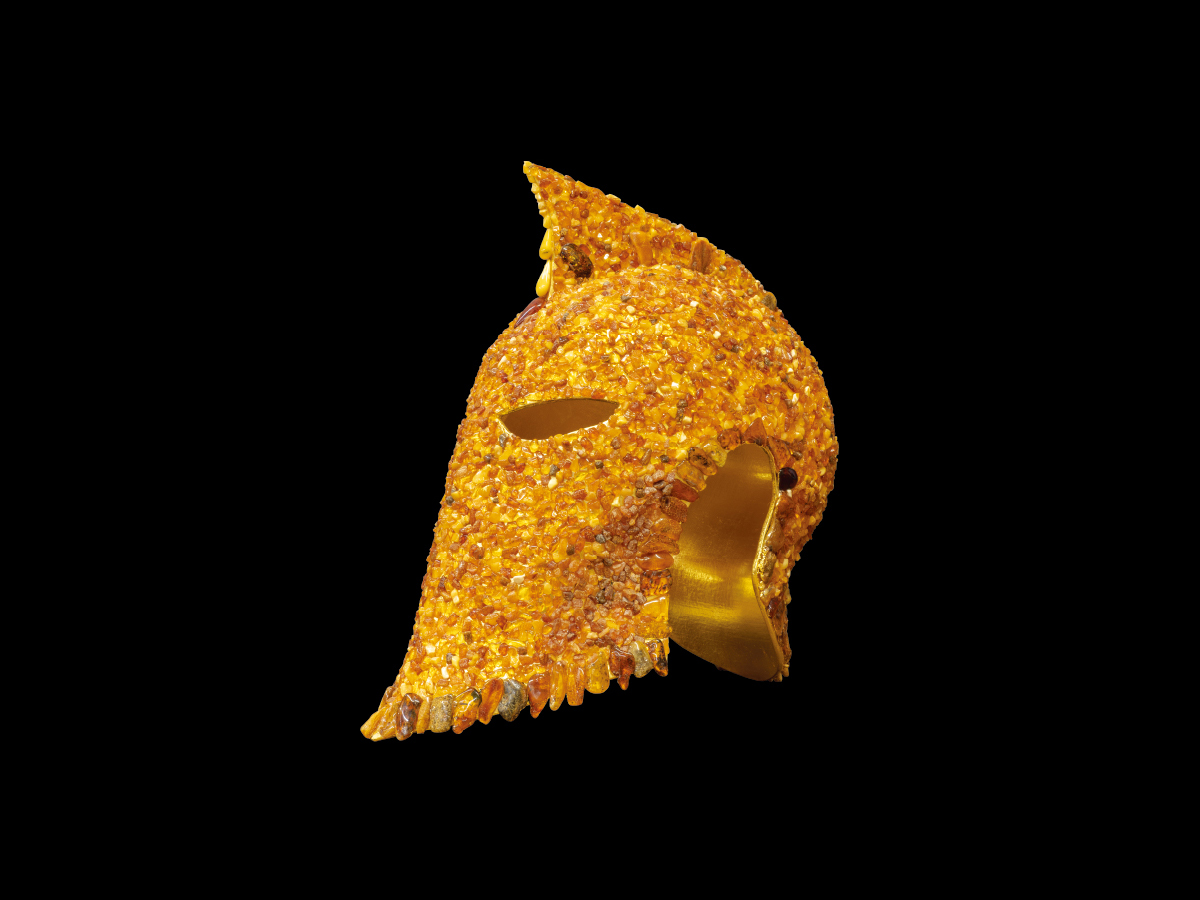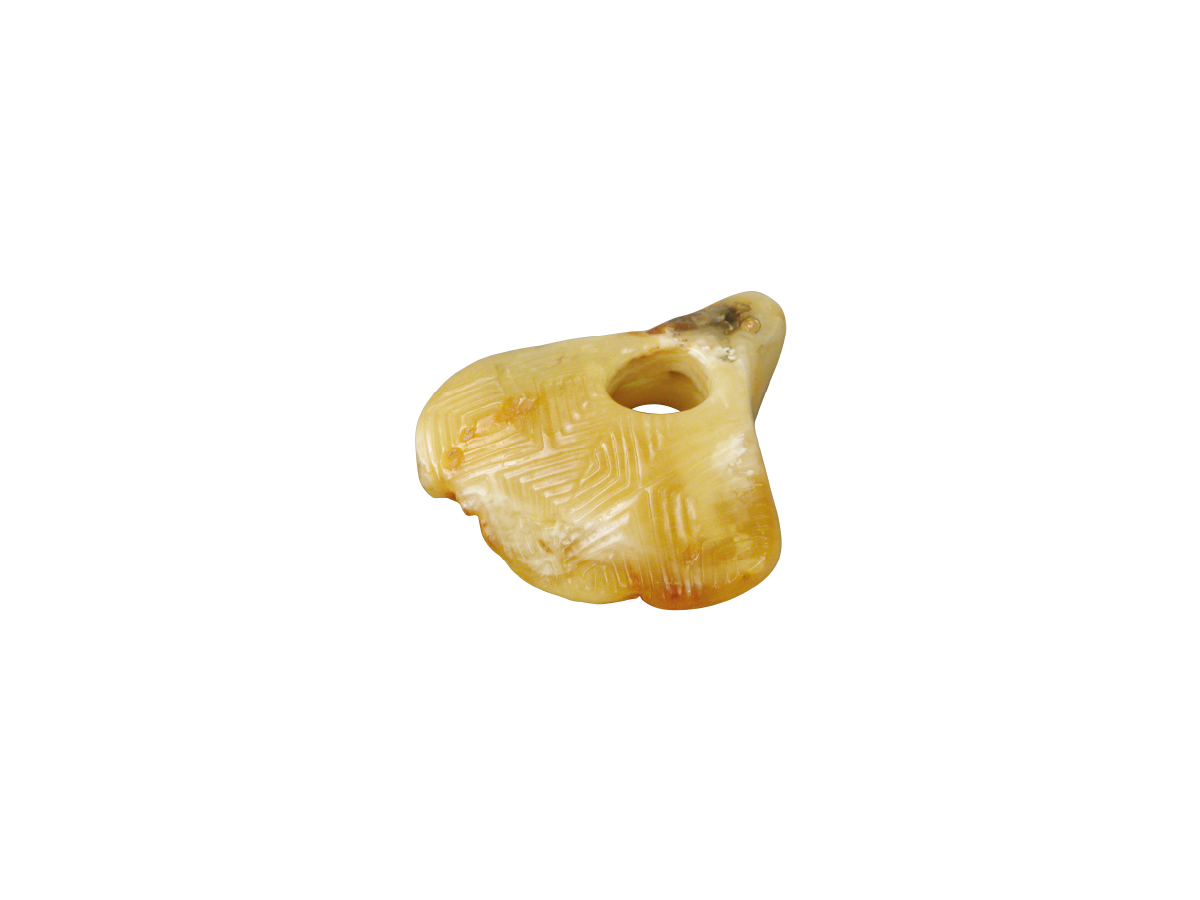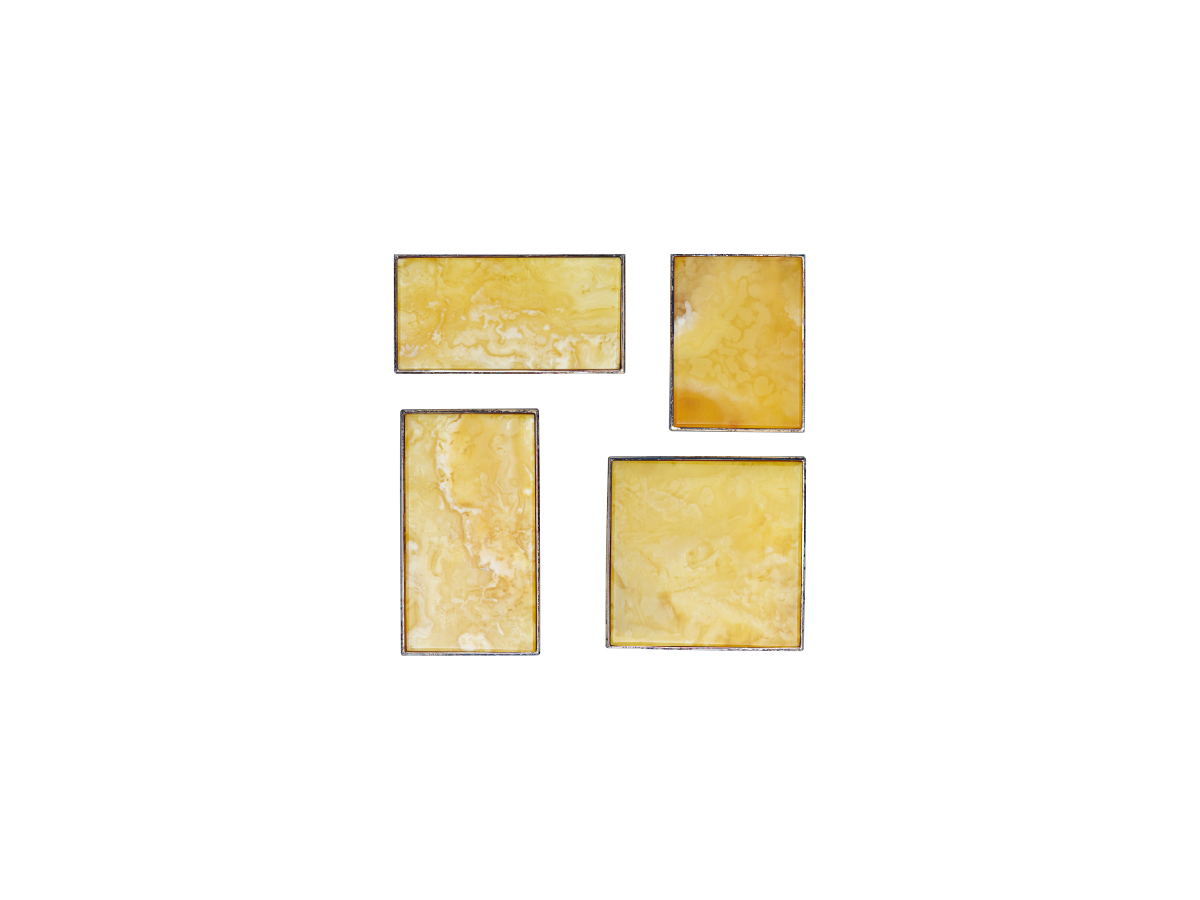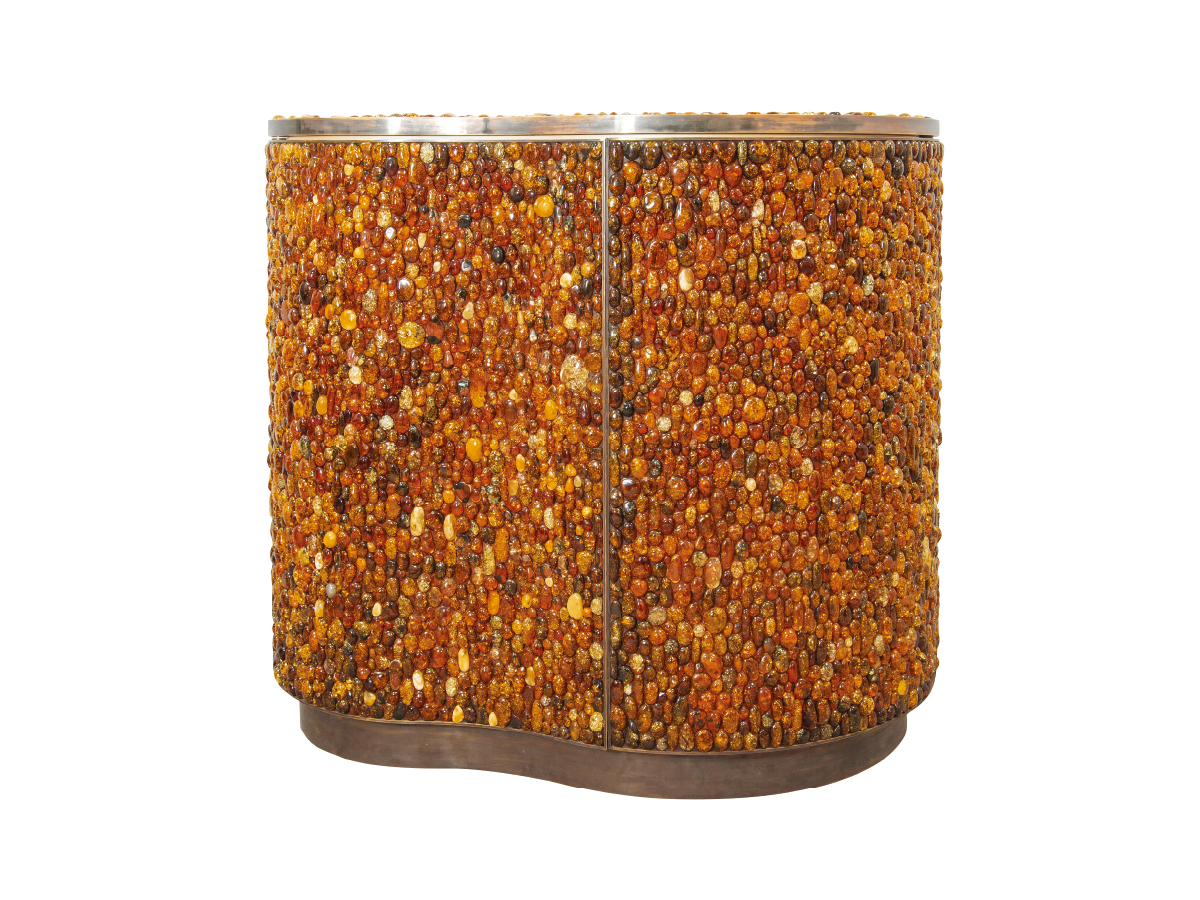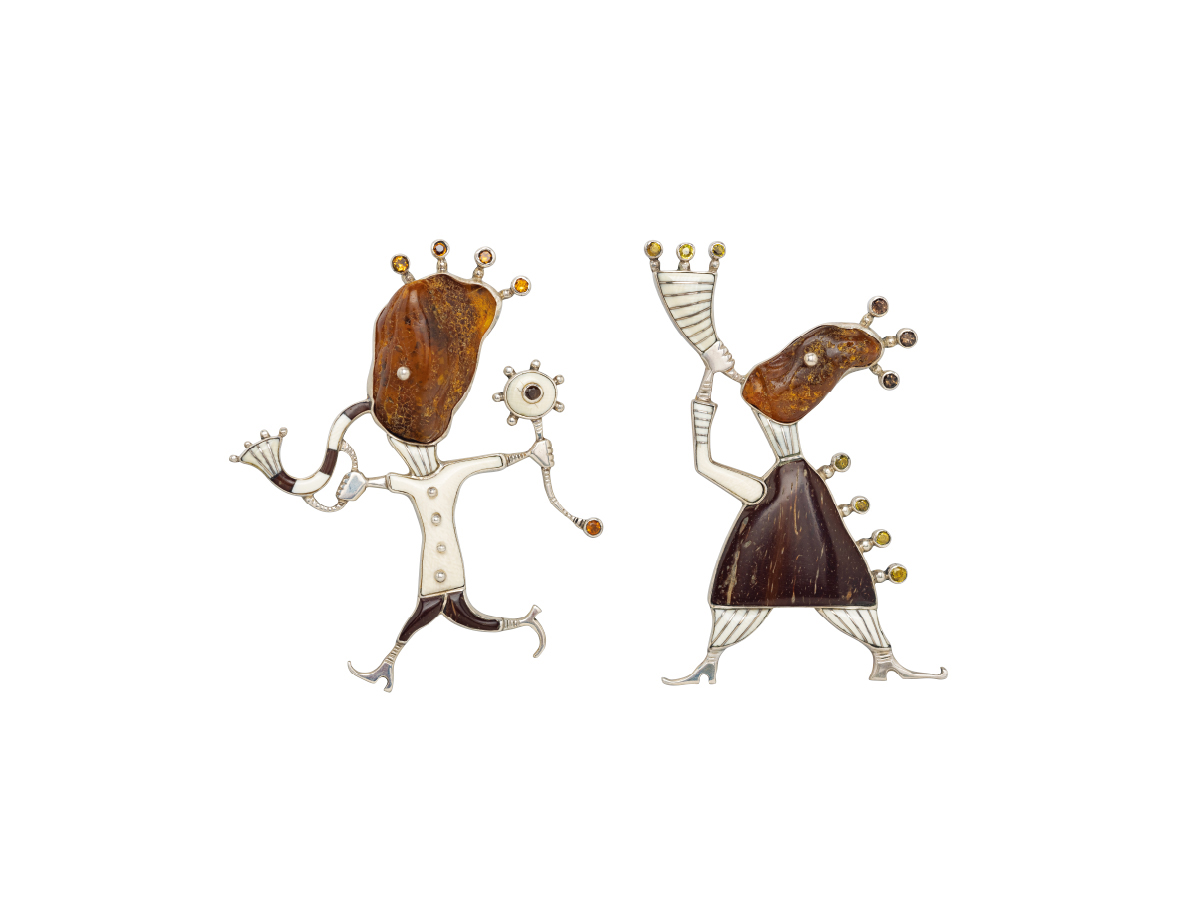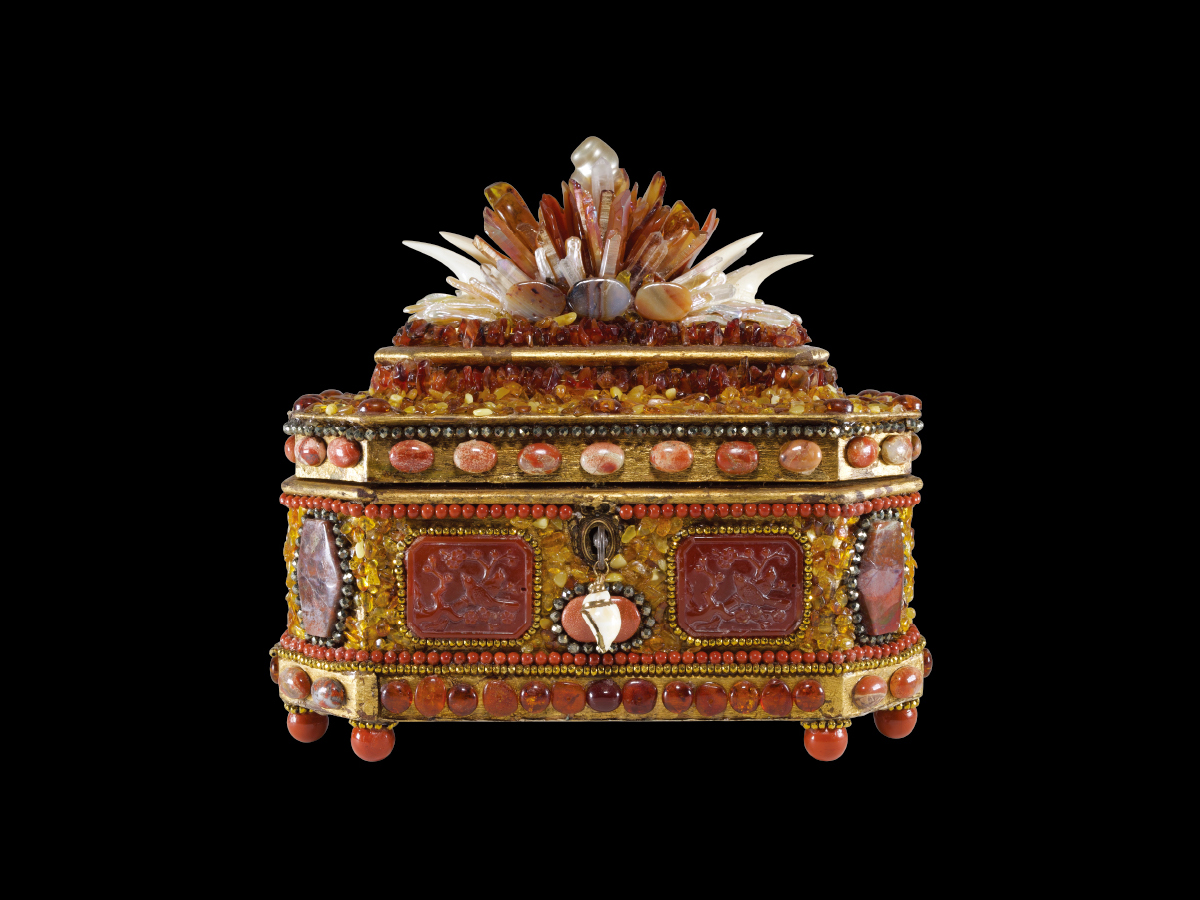Contemporary Works in Amber
Few European designers work with amber today, in part because of Modernism’s rejection of decorative elements and in part because of amber’s limited availability. However, a renewed interest in traditional arts and crafts has led to creative and often startling uses of amber, for instance on furniture and ornamental objects. In the Baltic regions, artists are consciously reappropriating amber that for thousands of years has represented their culture. Their new explorations highlight amber’s multi-faceted role as an independent object, a compositional element, and a decorative feature within an overarching design.
Coda: Fake Amber
The history of fake amber is almost as long as that of amber itself. Both Roman and ancient Chinese authors document materials mimicking amber to deceive buyers. Over the ages more sophisticated means have produced better imitations, especially with the use of 20th- and 21st-century technology. For instance, synthetic materials can simulate the translucent quality and texture of amber, while adding amber powder to replicate its smell. These make it more difficult to distinguish the true from the false, although a few traditional methods might still work: by the weight of the piece (amber is extremely light and floats in water); by its smell when heated (it emits a pinecone odour); and by its appearance under ultraviolet light (amber will glow blue or green).
Aline Putot-Toupry and Bruno Toupry
Flowering Branches2020s
Amber, porcelain, metal, carton-pierre, gold leaf
Branches:
H. 110 cm x L. 144 cm x W. 30 cm
H. 80 cm x L. 155 cm x W. 30 cm
Aline Putot-Toupry and Bruno Toupry Creations
Aline Putot-Toupry and Bruno Toupry
Amber Helmet2020s
Amber, gold leaf, polymer
H. 36 cm x L. 21 cm x W. 30cm
Aline Putot-Toupry and Bruno Toupry Creations
Jānis Jākobsons (b. 1959)
“Sense of Glory” Ring2006-2007
Amber, gold
H. 7.5 cm x L. 7 cm x W. 2 cm
Latvian National Museum of Art, Collection of the Decorative Arts and Design Museum
Maris Auniņš (b. 1949)
Pins “Amber Square” I–IV2014
Amber, silver
H. 4 cm x L. 4 cm x W. 1 cm
H. 5.1 cm x L. 2.9 cm x W. 1 cm
H. 4.8 cm x L. 2.5 x W. 1 cm
H. 3.6 cm x L. 2.8 cm x W. 0.9 cm
Latvian National Museum of Art, Collection of the Decorative Arts and Design Museum
Kam Tin (b. 1929)
Amber Cabinet2020
Amber, sycamore, brass
H. 119 cm x L. 124 cm x D. 47 cm
Maison Rapin
Guntis Lauders (b. 1965)
Pendant – Pins “Song Celebration” I, II2014
Amber, porcelain, coconut peel, smoky topaz, yellow sapphire, silver
H. 9.3 cm x L. 6.4 cm
H. 9.3 cm x L. 7.5 cm
Latvian National Museum of Art, Collection of the Decorative Arts and Design Museum
Fantasy Casket
21st centuryShell, amber, wood, gold
H. 22 cm x L. 21 cm x W. 14 cm
Philippe Thomas Collection


